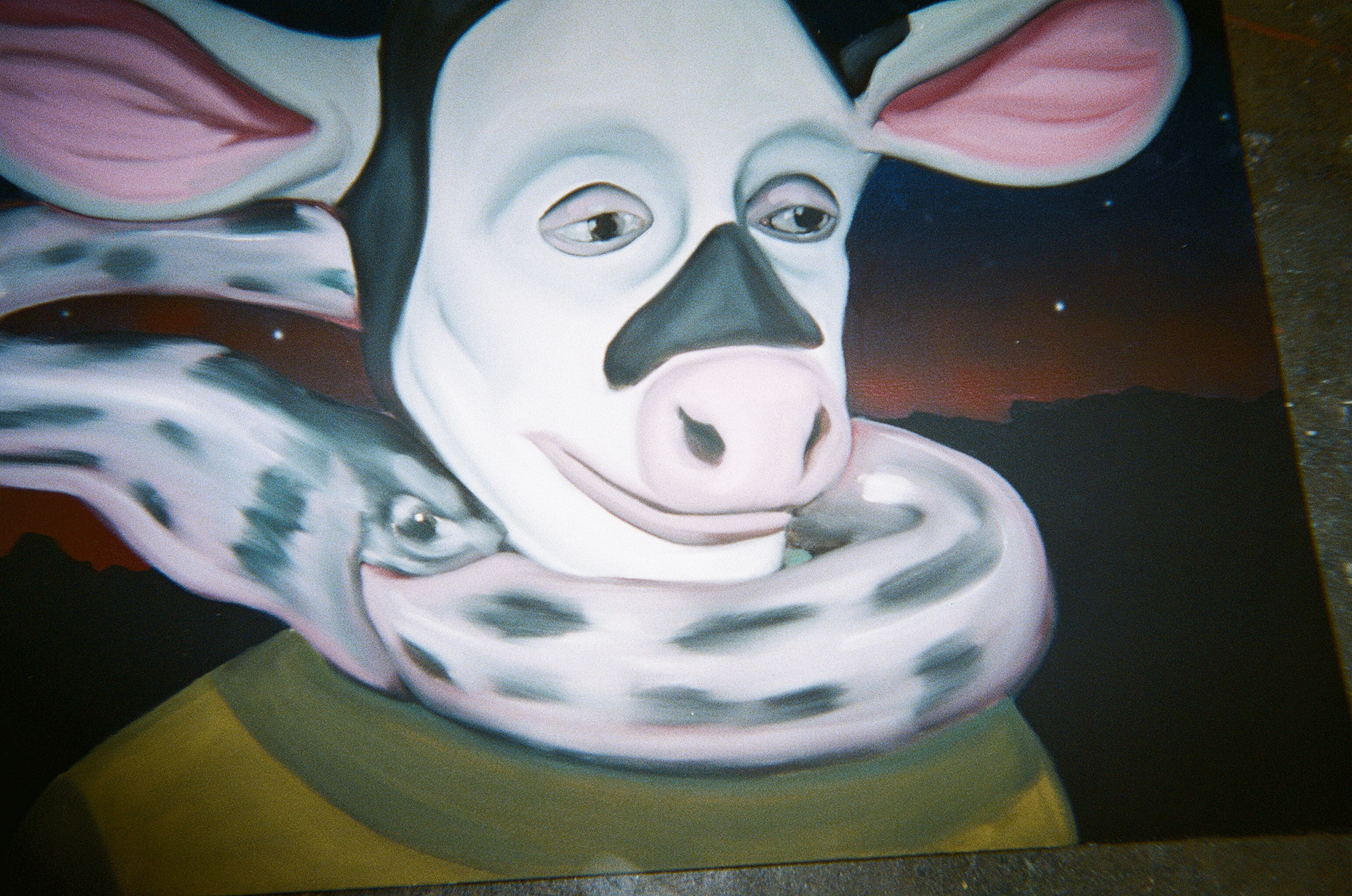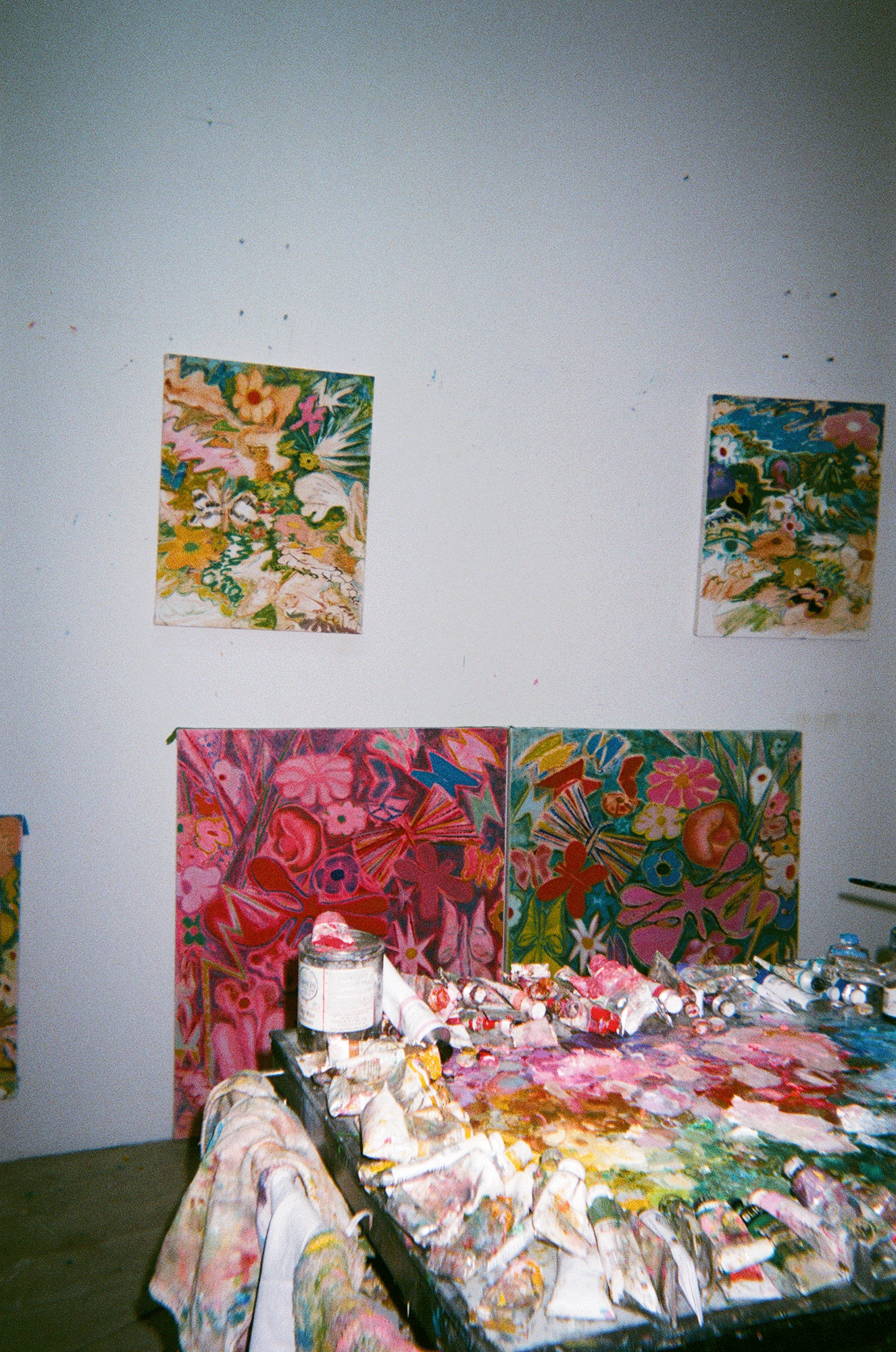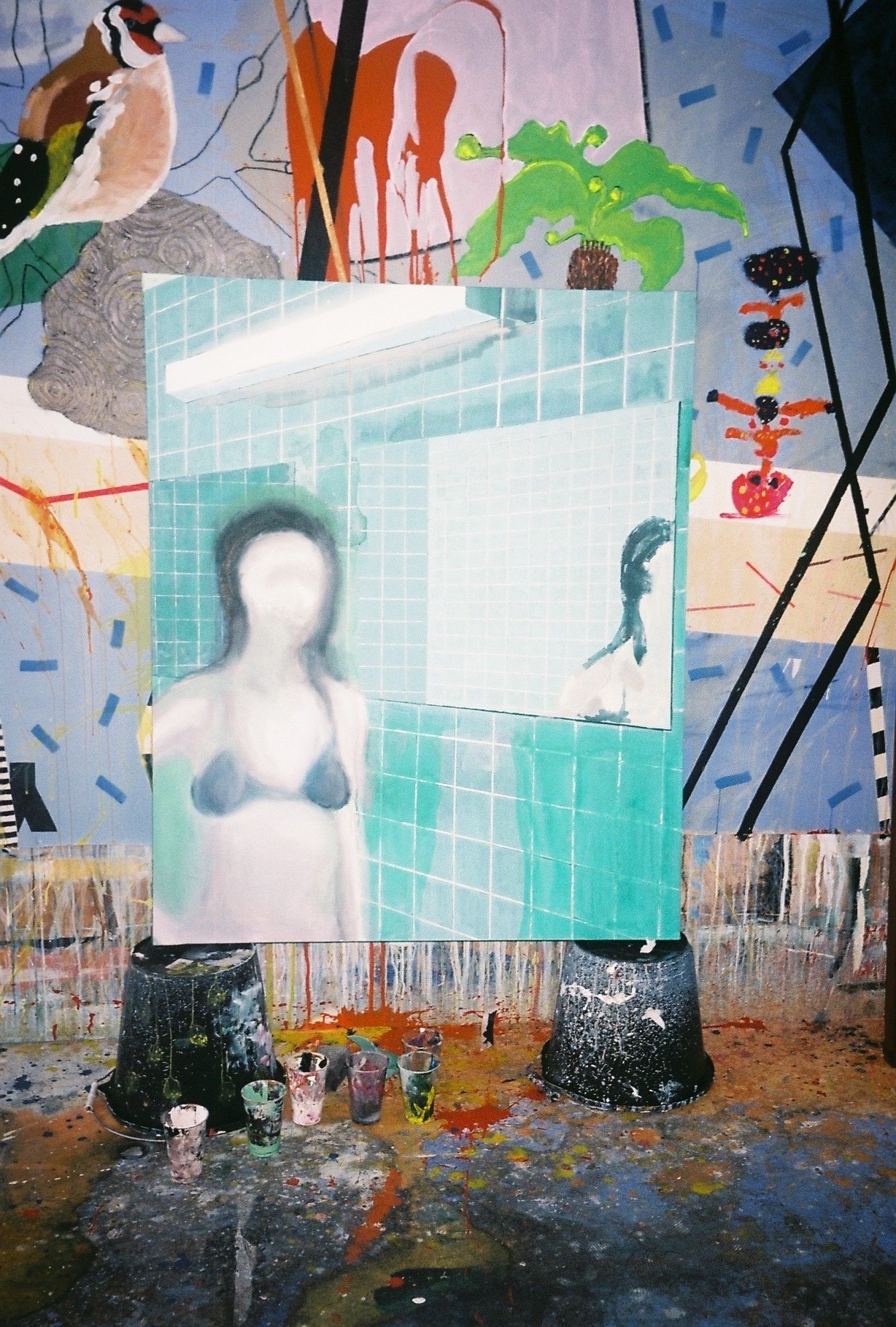




Holding uncertainty and specificity at the same time.
Born in Los Angeles, Anja Salonen spent most of her childhood in-between Finland and the Welsh village of Llandeilo, until she moved to London at age 15. After school, she studied painting on the Greek island of Paros until returning to the US for college, to complete her BFA. Salonen places significant importance on her alienating, challenging, and culturally disjointed childhood for its impact on her artistic practice and general world-views. This ultimately sparked her desire to develop new avenues of universal communication through art making, creating a permeable and indeterminate visual language that can hold uncertainty and specificity at the same time. Salonen’s paintings often explore new realms of possibility, both in their aesthetic and context, as seen in her new body of work, which examines metaphysical dimensions beyond the physical world; “an immersive Eden-like paradise that fills the spectrum of both light and dark through paintings that pass through multiple dimensions…” Through her exploration of labyrinths and alternative dimensions, Salonen aims to confuse and disorientate her viewer as her double-sided paintings invite them to circle round, and move through the space, conjuring the performative and immersive. Inspired by the contrasting landscapes found in Los Angeles – its natural beauty paired with industrial ‘hell-scapes’ – Salonen plays with these tensions, translating this into her work. Advocating the city for its DIY orientated and experimental emerging art scene, Salonen is active in its community, collaborating with Allegra Jones on the performance project Dovestone. DATEAGLE ART visited the artist at her Downtown studio to learn more about her up and coming show ‘Lagomorph Labyrinth’ at Sade gallery and her interest in the transformative nature of the body.

BACKGROUND & STUDIO
Can you tell me about the new body of work in your studio and the direction you are taking with your practice?
I’m currently working on a solo show titled ‘Lagomorph Labyrinth’ that will open at Sade gallery in Los Angeles on December 15. The body of work guides the viewer through a path of symbolic spiritual ascension, guided by the figure of the rabbit, belonging to the order of Lagomorph. The labyrinth takes on the form of a spiral, confusing and disorienting, as it removes the viewer from their everyday world. I am working on an immersive Eden-like paradise that fills the spectrum of both light and dark through paintings that pass through multiple dimensions.
How does living and working in Los Angeles influence your practice, if at all?
Los Angeles has had a huge impact on my practice. The landscape, the light, the architecture, the diversity of cultures – an amalgam of dreamy sunsets and burning ‘hell-scapes’. I grew up near the ocean, and find my bearings in relation to it now. There’s an intersection of nature and city here, where a mutual dwarfing effect is constantly in tension. Aside from these, the community here surrounding art and music is incredibly supportive, DIY oriented, experimental, and exciting, and I feel honoured to be a part of it!

WORK
Your work focuses a lot on the body; its tangible and its mediated forms, and the way that identities perform themselves on digital platforms – can you tell me more?
Certainly, the body is a focus of my work. I think that what I’m delving into now is really beyond the body, but being translated through the body. My practice has developed along side my own self-work, and as my relationship to my own body has changed, so have my paintings. I worked through a sense of confusion around the body, what it means, and why I was confined to it, and gaining a higher understanding of these questions for myself changed the direction of my work. What I now realise is that I am not confined, I am expansive, and I am a nonphysical being having a physical experience rather than the other way around. My body is what allows me to channel nonphysical visions into paintings, and the lens of the body becomes an entry point for others to experience these visions themselves, through empathy. We have inherent ability to subconsciously read a person’s facial expression, mood, thought, feeling, body language – and an entire story can be told by the angle of the eyelid. Right now, I’m exploring the metaphysical dimensions beyond the physical world, but still through the visual language of the latter.
Your work has an immersive quality as you often break free from the conventional canvas by creating larger constructed pieces – has this always been a part of the way you work?
The idea of immersion has always been important to me in how I display my work. I love the conventional canvas for individual paintings, but when I’m installing a body of work, there always needs to be an immersive, interactive, or environmental aspect to it. I want the pieces to still be paintings, but double sided paintings that you have to circle around to see, paintings that direct the movement through a space, paintings on the floor.
Do you think eventually you will stop using the canvas all together?
Probably not – the canvas still has endless potential for experimentation!


Your figures appear slightly detached, almost removed from reality – would you agree?
Yes. I sometimes think of my figures in a trance state, as a way of communicating that state to the viewer.
You reference medieval scriptures and bestiaries in your practice – can you tell me more about this and when you became interested in this particular area?
Through all of my art historical education I’ve been drawn to medieval art – initially for its aesthetics, and now for its esoteric and mystical symbolism as well.
I read that you are inspired by Erwin Panofsky’s Perspective as symbolic form, and Masahiro Mori’s concept of the ‘uncanny valley. Do your ideas often come from text/theorists?
The texts that I’m reading are always influencing my work hugely, and my path of research is directly aligned with what I paint. These texts range from theory to poetry, to spiritual texts and new age self help books.
Your work focuses a lot on dimensions, alternate realities, the subjectivity of objects, illusion and delusion – when did this begin to factor into your work?
Yes! More and more over the past couple of years, as I’ve learned more about quantum physics as well as esoteric mystery traditions.

Would you say that there is an element of play and humour in your practice?
Yes! Play and humour are very important to me, and I think are universal creative forces that are very beneficial for us all.
I read that you are trying to capture how it feels to be alive right now, the collective experience of this present moment; is this a backlash from cultural/personal anxieties?
We live in a time of exponential growth and change, and it is highly significant to witness. I want my paintings to be a link between our collective experience in the physical plane and our higher spiritual unity.
14.12.18
Words by Lara Monro
Related
Interview

Laurie Nye
Interview

